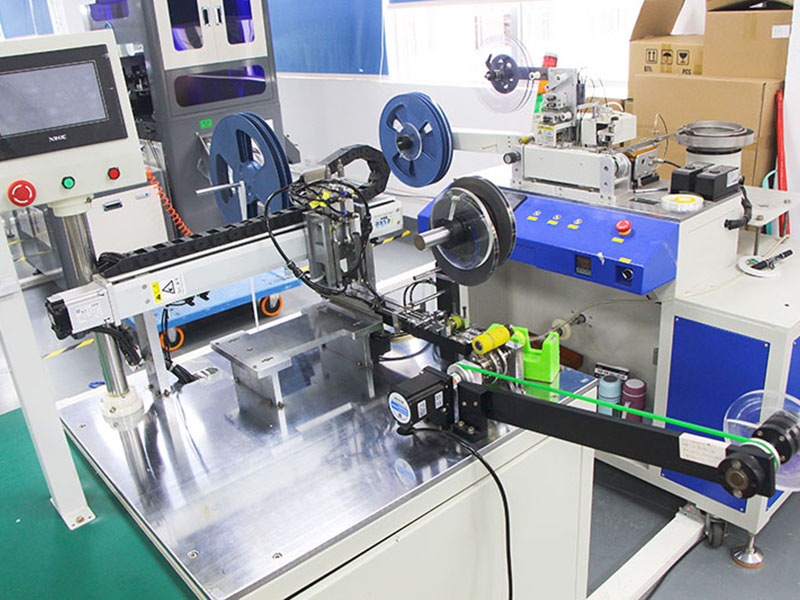Best Spring Loaded Test Probes China Manufacturer For ICT/FCT
Spring loaded test probes detect PCB component connections and soldering, open and short circuits, and component values. Detect PCBA functionality and electrical connections. Comprehensive analysis of PCBA signals, testing for large-scale production and high complexity circuits. Johoty provides the perfect solution.
Features:
- Accurately measure small defects in PCBA.
- High-frequency response ensures signal integrity.
- Compatible with multiple testing devices and points.
- High conductivity, high temp, and corrosion resistance.
- The design is simple and easy to clean and replace.
- High durability, long lifespan, reduced replacement.
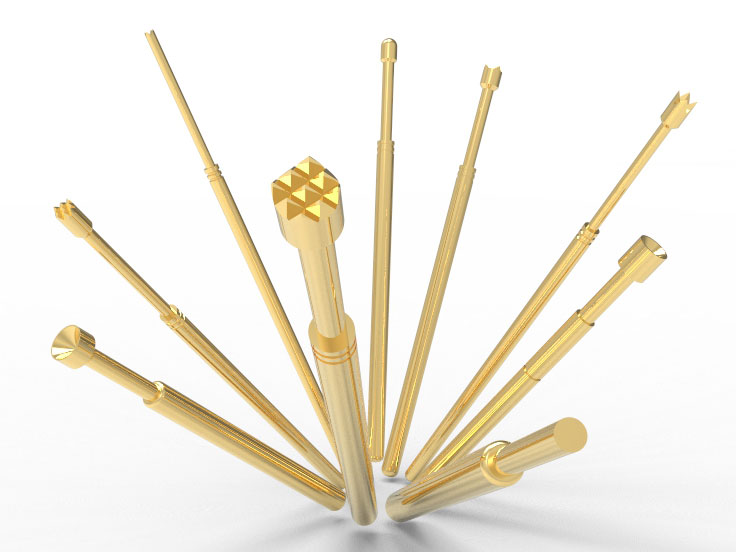
Spring Loaded Test Probes Series
Spring loaded test probes include 5 categories: detect PCBA open, short, and component impedances. PCBA electrical performance and logic function. Automated testing, high-speed signal tests, high-temperature, humidity, voltage tests. Johoty can provide cost-effective and durable testing probes. There are point, flat, ball, blade shapes, grooves, cup, claw shapes, etc., each of which has different sizes, angles, and point quantities. They have high-performance springs, excellent conductivity and signal integrity, with tips made of beryllium copper, gold-plated or silver to enhance conductivity and wear resistance. Various diameters and lengths, compatible with various testing fixtures.
Specifications of Spring Loaded Test Probe for ICT Test
| Parameter | Values |
|---|---|
| Overall Length | 12, 16, 18.5, 21, 25, 33, 40, 50, 70 mm, Custom |
| Working Travel | 0.10, 0.50, 0.75, 1.00, 1.50, 2.00, 2.50, 3.00, 4.00 mm, Custom |
| Maximum Travel | 1.00, 1.50, 2.00, 3.00, 4.00, 5.00, 6.00 mm, Custom |
| Spring Force | 15, 20, 30, 50, 60, 80, 120, 150, 180, 250, 300, 500 gf, Custom |
| Barrel Outer Diameter | φ0.12, φ0.30, φ0.36, φ0.40, φ0.46, φ0.50, φ0.56, φ0.68, φ0.76, φ0.90, φ1.02, φ1.36, φ1.50, φ2.00 mm, Custom |
| Plunger Outer Diameter | φ0.20, φ0.25, φ0.30, φ0.38, φ0.45, φ0.50, φ0.64, φ0.70, φ0.80, φ1.00 mm, Custom |
| Rated Current | 0.1, 0.3, 0.5, 1.0, 2.0, 3.0, 5.0, 8.0, 10.0, 15.0 A, Custom |
| Contact Resistance | ≤10 mΩ, ≤20 mΩ, ≤50 mΩ, Custom |
| Operating Temperature | –40°C ~ +120°C, or –40°C ~ +150°C, Custom |
| Plunger Tip Style | Flat, Conical, Dome, Cross, Blade, Point, Crown, Ball, Bevel (Gold-plated), Custom |
| Tail Pin Type | Solder Cup, Plug-in, PCB Mount (SMD/Through-hole), Custom |
| Barrel Material | Brass, Phosphor Bronze, Stainless Steel, Custom |
| Plunger Material | Beryllium Copper, Stainless Steel, Hardened Steel, Tungsten Steel, Custom |
| Surface Finish | Gold Plated, Nickel Plated, Silver Plated, Custom |
| Mounting Type | Press-fit, Threaded, Straight plug, Custom |
| Mechanical Life Cycle | ≥10,000, ≥30,000, ≥50,000, ≥100,000, ≥200,000, ≥500,000 cycles, Custom |
| Receptacle Shape | Cylindrical, Hexagonal, Flat, Custom |
Applications of Spring Loaded Test Probes
Power rail stability test: Detect the voltage regulation status and ripple of each power rail (such as 3.3V/5V/12V) in FCT. Commonly used for industrial power module testing, according to IEC 61000-4-7 for output stability verification.
Electrical connectivity verification of the entire board: Conduct resistance, capacitance, inductance, diode polarity and connectivity tests during the ICT stage. Test the server motherboard and refer to IPC-9252 for a coverage requirement of over 85%.
Relay/switch function on/off detection: used for home appliance control boards to ensure action delay <10ms and contact resistance <100mΩ. Spring loaded test probes perform FCT testing on relay input control and output status.
Communication interface electrical function verification: FCT tests the transmission and reception functions and waveform integrity of communication ports UART, RS-232, RS-485, CAN, and I2C. Industrial automation control boards often undergo functional testing.
Audio module channel function testing: FCT testing to test the transmission status of signal paths such as headphone jack and speaker interface. Smart speakers and car entertainment systems often require spring loaded test probes for functional checks, with frequency response errors of less than ±1dB.
LED control signal and lighting consistency test: FCT detects the control logic and lighting consistency of multiple LED driving signals. Commonly used in lighting control boards and advertising lightbox controllers.
Key matrix and input signal scanning verification: ICT or FCT detects the row and column signals of the keyboard matrix to confirm that there are no short circuits/open circuits. Suitable for POS terminals and industrial control panels.
Sensor interface reserved port detection: Test the input and output connectivity and signal response of sensor connectors such as temperature, humidity, air pressure, Hall sensor, etc. Environmental monitoring products often require Johoty’s spring loaded test probes.
Relay protection test circuit verification: ICT is used to check whether each protection module has formed an effective connection path with the main circuit. Suitable for power system protection boards, it must comply with the IEC 60255 standard.
Motor control drive port function test: FCT conducts contact tests on PWM, direction control, Hall feedback and other ports. This type of functional testing is commonly used for quality control of fan and pump drive control boards.
Electromagnetic lock and electromagnet output drive detection: Test the output strength and response time of the electromagnetic control port. Widely used in access control and safe control boards, the driving voltage needs to be maintained within ± 5% of the rated value.
Functional testing of digital/analog I/O boards: Conduct comprehensive testing of DI/DO and AI/AO of PLC or embedded control systems through spring loaded test probes. Verify the accuracy and response delay of edge voltage and current, in compliance with IEC 61131 standard.
Why Johoty's Spring Loaded Test Probes?
Johoty’s spring loaded test probes ensure reliable test data, reduce replacement frequency, meet different testing needs, improve testing efficiency, and perfectly meet requirements. Significantly improve testing accuracy and production efficiency while reducing operating costs. Contact us now!
Raw Materials and Finishing of Spring Loaded Test Probes
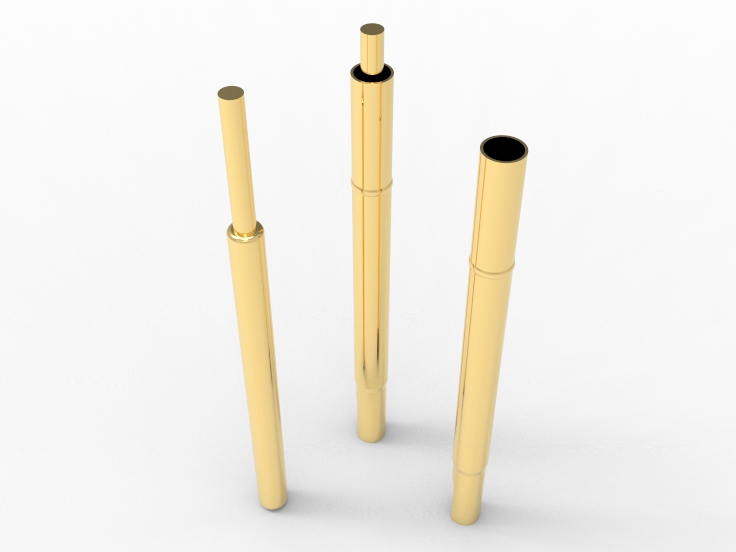
Plunger Material: Beryllium Copper Gold Plated
Plunger typically uses beryllium copper, which has excellent elasticity and conductivity, with a hardness of HV200 or higher. The thickness of the gold plating layer is generally 15-30 μ in, effectively reducing the contact resistance to <50mΩ. It has strong advantages in high-frequency and micro voltage signal detection.
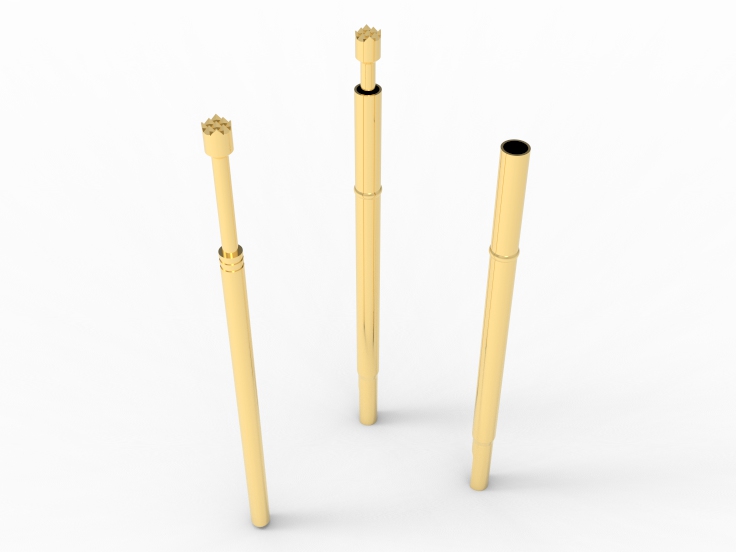
Spring material: Stainless steel SUS304 or SUS631
The spring is made of austenitic stainless steel SUS304 or precipitation hardening SUS631. They have excellent fatigue strength, high hardness, and corrosion resistance, with a fatigue life of over 500,000 cycles. This material ensures stability under high-frequency mechanical actions.
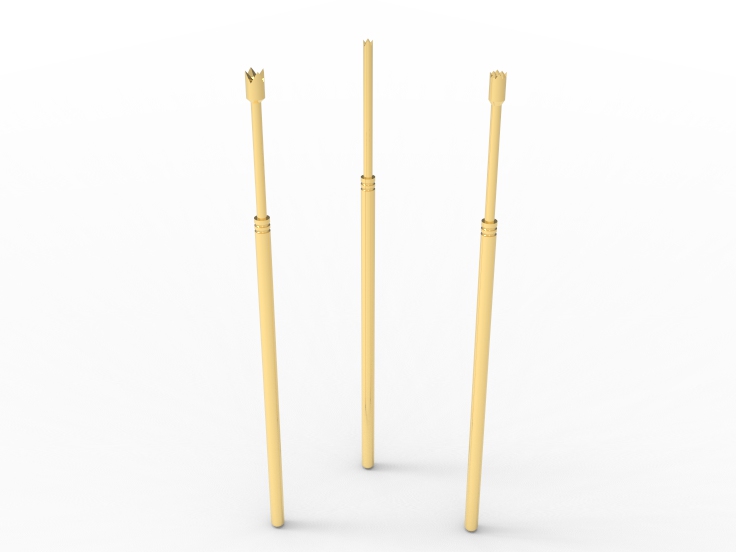
Barrel material: Nickel plated phosphor bronze
Barrel usually uses phosphor bronze, which has high mechanical strength and good conductivity. The surface nickel plating thickness is usually 50-100 μin, which has wear-resistant and anti-oxidation properties. On the basis of nickel plating, gold plating for 5-30 μin can maintain good adhesion. It can maintain the overall impedance stability of the probe and is used for testing with multiple insertions and removals.
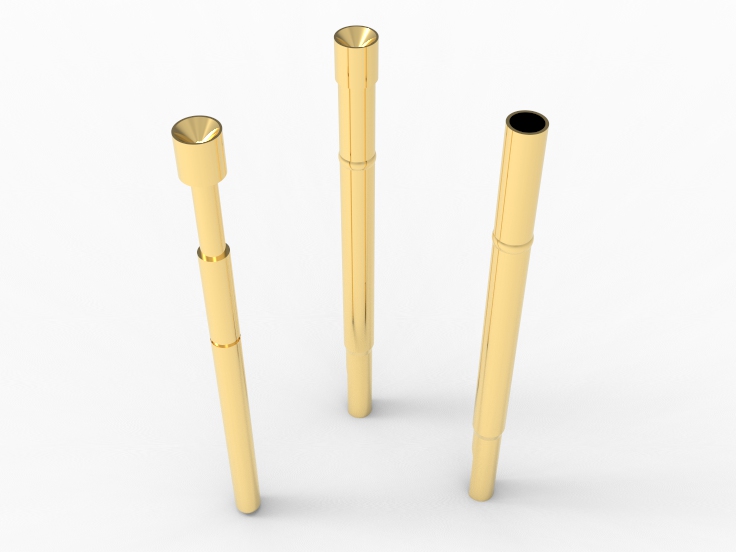
Surface treatment: Anti oxidation metal coating system
In addition to functional electroplating, some probes use multi-layer composite coatings of Ni/Pd/Au. This composite electroplating can improve wear resistance and oxidation resistance. Provide process support for the requirement of electrical contact reliability >99.8% in high-frequency and high-speed FCT applications.
Selection of Spring Loaded Test Probes
Receptacle selection: Difference between blind hole and through-hole structures needs to be matched with testing environment.
Blind hole receptacle can effectively prevent impurities from entering the inside of the barrel during testing. Suitable for situations with high dust or airflow, the through-hole structure is more conducive to heat release. The selection should consider the cleanliness level and heat accumulation characteristics of the working environment.
Spring force parameter: The appropriate load force should be selected based on PCB pad material and thickness.
Spring force, commonly ranging from 20gf to 180gf, directly affects the contact pressure. Excessive size may damage the solder pad, while insufficient size may result in poor contact. IPC-2221 recommends maintaining a contact pressure of 30-50gf/mm² to balance contact reliability and pad wear.
Contact resistance: Long term stability testing should not be ignored based solely on nominal values.
Initial contact resistance<50mΩ is a common industry indicator, but long-term performance is more critical. Attention should be paid to the range of contact resistance changes of spring loaded test probes under 50k cycles. Suggest referring to IEC 60512-2-1 for dynamic impedance testing evaluation.
Life test: It is necessary to simulate based on real load conditions and temperature and humidity conditions.
Nominal mechanical lifespan of 100k cycles is only laboratory data. In high humidity or corrosive, avoid overestimating test probe’s durability. The mechanical and electrical life degradation rate of spring loaded test probes should be verified at 85°C/85%RH.
High frequency scenario: Ignoring signal integrity matching often leads to testing errors.
In high-frequency FCT applications >1GHz, spring loaded test probes may introduce signal distortion due to self-inductance, capacitance and impedance mismatch. It is recommended to use low inductance gold-plated needles and short stroke structures, and verify that the S parameters meet the standards through TDR testing.
Technique and Interface of Spring Loaded Test Probes
Compatible with barrel: The standard Ø1.36mm and Ø1.02mm barrels are compatible with mainstream fixtures.
The standardized design of the outer diameter of commonly used barrel facilitates quick replacement and maintenance. Adapt to universal probe holder platforms such as GATE and Pylon to improve system integration efficiency. Compliant with the universal interface DIN EN 60352-5 for ATE fixture industry.
Welding/crimping method: Select the connection form based on assembly density and maintenance requirements.
Low frequency scenarios can be connected by soldering, suitable for situations with high stability requirements but low replacement frequency. High density fixtures are recommended to use crimping connections for quick replacement and modular maintenance. Meet rapid replacement requirements of SMT/ATE testing platforms.
Fixture support: Supports combination of soft/hard boards and multi-layer signal synchronous pressing structure.
The probe should be able to operate in conjunction with flexible substrates or multi-layer FR4 board fixtures in the upper and lower pressing fixtures. Ensure plunger’s vertical accuracy in the Z direction is ≤±0.05mm to avoid lateral slip. Commonly found on vehicle control boards and network switch board testing platforms.
Automation compatibility: The structure needs to be adapted to automatic up/down plunger and multi axis testing platforms.
Suitable for automatic replacement of spring loaded test probes and XY platform positioning systems. Spring loaded test probes have standard plunger length, tolerance control, and structural symmetry. Support stable contact within a 20ms action cycle, meeting the high cycle testing requirements of non-standard equipment in intelligent manufacturing.
FAQ
What are Spring Loaded Test Probes?
In electrical testing, spring loaded test probes are critical components to ensure accurate detection of electronic devices. It has high conductivity, wear resistance, and stability, suitable for ICT, FCT, and ATE tests. It can withstand high-frequency currents, provide low contact impedance, and work well in various complex tests. It can also adapt to various requirements and ensure reliability.
How to Extend Lifespan of Spring Loaded Test Probes?
Clean up test probe surface to reduce dust and oxidation accumulation. Regularly use specialized tools for maintenance to avoid mechanical damage. Spring loaded test probes are suitable for testing conditions to reduce excessive wear. Control the temperature and humidity of the usage environment to avoid overheating. Ensure proper installation and use to prevent abnormal damage.
What are Electrical Performance of Spring Loaded Test Probes?
Has low contact impedance and can accurately transmit signals. Supports high-frequency signals and high currents with stable performance. Strong voltage resistance and adaptability to complex electrical environments. Superior conductivity ensures accurate test results. Good noise suppression effect and improved signal quality.
Is the Installation of Spring Loaded Test Probes Complicated?
Spring loaded test probes are easy to install, simply align with the device interface. Its design emphasizes quick insertion and removal, making it easy to replace and maintain. Equipped with standardized installation tools to ensure precise operation. Provide detailed installation guidelines for engineers to learn. Compatible with multiple device interfaces without the need for complex adjustments.
What are Common Faults and Solutions for Spring Loaded Test Probes?
When there is poor contact, clean the contact points with cleaning tools. When conductivity decreases, check the oxidation condition and replace timely. Replace the test probe immediately if plunger tip is deformed to avoid errors. If the signal is distorted, check if it is caused by test probe wear. If you find short circuit, please check whether the installation is correct.
What are Environmental Adaptability of Spring Loaded Test Probes?
Spring loaded test probes can adapt to extreme temperatures and humidity and aren’t affected easily. Can prevent chemical damage to test probe with corrosion-resistant materials. Strong earthquake resistance, suitable for production lines with frequent vibrations. Can maintain stable performance under high pressure, ensuring safety. It also supports low-temperature operation and adapts to extreme environments.

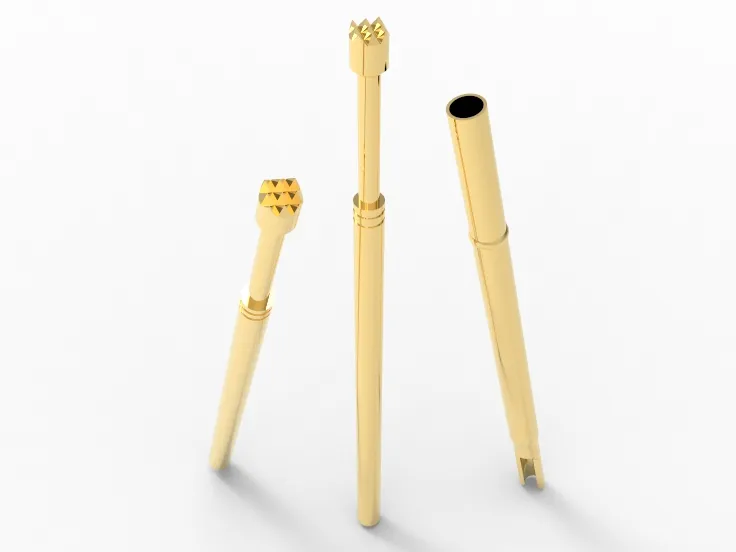
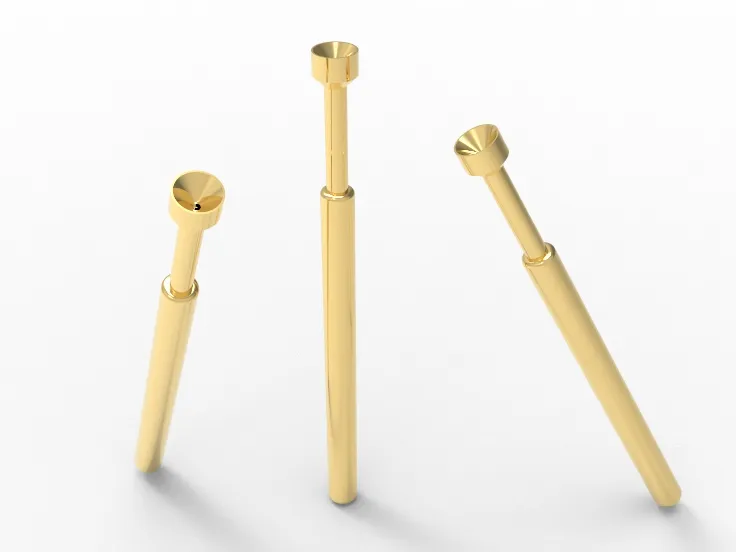
 +86 13590816656
+86 13590816656 +86 13590816656
+86 13590816656